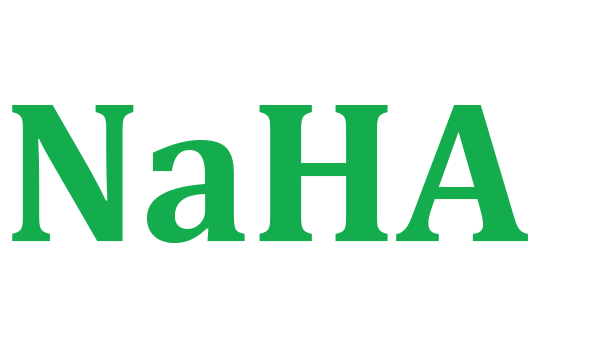Thomas Doe
Social WorkerNulla totam rem metus nunc hendrerit ex voluptatum deleniti laboris, assumenda suspendisse, maecenas malesuada morbi a voluptate massa! Hendrerit, egestas.

A high prevalence of thyroid dysfunction has been reported in autoimmune diseases and kidney diseases, such as systemic lupus erythematosus and nephrotic syndrome 11,12. Previous studies also reported an increased risk of thyroid dysfunction in AAV patients 13,14. Lionaki et al. and Prendecki et al. reported that the prevalence of thyroid dysfunction in AAV patients was about 20%, which was significantly higher than its prevalence in the general global population (0.5–5.3%) 15. In addition, compared to AAV patients without thyroid dysfunction, they found that those with thyroid dysfunction were more likely to be women and MPO-ANCA-positive 16,17. However, the thyroid function status in AAV patients with renal injury remains unclear. Moreover, the clinical and prognostic relevance of thyroid dysfunction in AAV patients with renal injury is also unclear.
This study aimed to investigate thyroid function in AAV patients with renal injury and to explore the clinical relevance of renal dysfunction in the patients. T3 administration should be considered an alternative treatment for patients with myxedema coma who require concomitant glucocorticoid administration. Myxedema coma is often treated with LT4 alone, as recommended by the guidelines in the United States (25) and Latin America (26).
Hence, clinicians should be aware of the risks of dynamic exacerbations in patients with hypothyroidism. Furthermore, our study suggested that combination therapy with thyroxine and liothyronine might prove effective for patients with myxedema coma, especially for those who require high-dose glucocorticoid administration. In addition, the thyroid hormone also regulates neutrophil respiratory burst by regulating gp91phox, the catalytic core of NADPH oxidase, which is an important part of the pathogenesis of AAV 8,9. Thyroid dysfunction can disrupt the delicate balance of the immune system, leading to an unbalanced inflammatory response 10.
However, whether IgA vasculitis causes deterioration of hypothyroidism into myxedema coma requires further clarification. In addition, it remains unclear whether liothyronine (LT3) should be administered in addition to levothyroxine (LT4) to treat myxedema coma, although the efficacy of combination therapy with LT3 and LT4 has been demonstrated previously (14–16). Drug-induced vasculitis is an inflammation of blood vessels caused by the use of various pharmaceutical agents. Vasculitis causes changes in the walls of blood vessels, including thickening, weakening, narrowing and scarring. Inflammation can be short-term (acute) or long-term (chronic) and can be so severe that the tissues and organs supplied by the affected vessels do not get enough blood.
We expect to conduct a large-scale, multi-center collaborative study to investigate overall characteristics. Further investigation into the underlying mechanisms and potential treatment strategies may be a direction of future research. There were twenty-four patients (13.79%) in the group of AAV patients with normal thyroid function. The synthroid cymbalta thyroid dysfunction group consisted of one hundred and fifty (86.21%) individuals.
There were many AAV patients who did not have thyroid function data because different physicians had different habits of screening for thyroid function. The screening of thyroid function was very frequent in recent years, which might be due to the awareness of the association between thyroid function and kidney disease. Many AAV patients included in years much further back had no data of thyroid function, which made the sample size small.
In clinical practice, a subset of AAV patients with renal involvement exhibiting thyroid dysfunction were observed. However, the clinical and prognostic relevance of thyroid dysfunction in AAV patients with renal injury remained unclear. The present study analyzed the thyroid function in the cohort of AAV patients with renal injury. Woywodt et al. also question our method of collecting medical and treatment history via telephone interviews. We concur that recall bias is a concern in any case-control study and can lead to spurious associations. The best defense against recall bias is the confirmation of information through a separate source.
(D) Chest computed tomography showed atelectasis and mild pulmonary congestion. (E) Thyroid echo showed diffuse atrophy of the thyroid gland, irregular surface, and rough and low echo levels inside the thyroid gland. The thickness of the isthmus is 2.6 mm in diameter, which is indicated as broken line 1.
Pearson’s correlation coefficient was used to describe the linear correlation between normally distributed data, and Spearman’s correlation coefficient was used to describe the linear correlation between non-normally distributed data. Kaplan–Meier analysis was used to analyze survival rates of the normal thyroid function group and thyroid dysfunction group and to create graphs of the observed survival curves, while the log-rank test was used to compare curves from different groups. Logistic regression was used to analyze the risk factors related to thyroid dysfunction.
Combination therapy with LT4 and LT3 may be useful for patients with myxedema come who require supra-physiological glucocorticoid administration. Dynamic exacerbations of the patient’s condition led us to establish the diagnosis of myxedema coma. Furthermore, T3 depression was highlighted in the clinical features of this case that was treated using glucocorticoids at a pharmacological dose. Clinicians should be aware of myxedema coma as a critical disorder that can cause rapid deterioration. Review of the literature showed a relationship between propylthiouracil overdose and the following Henoch–Schönlein purpura (IgA vasculitis) as a side effect. 3 It has been well documented that propylthiouracil could induce antineutrophil cytoplasmic antibody (ANCA)-positive vasculitis, which predominantly affects small vessels.